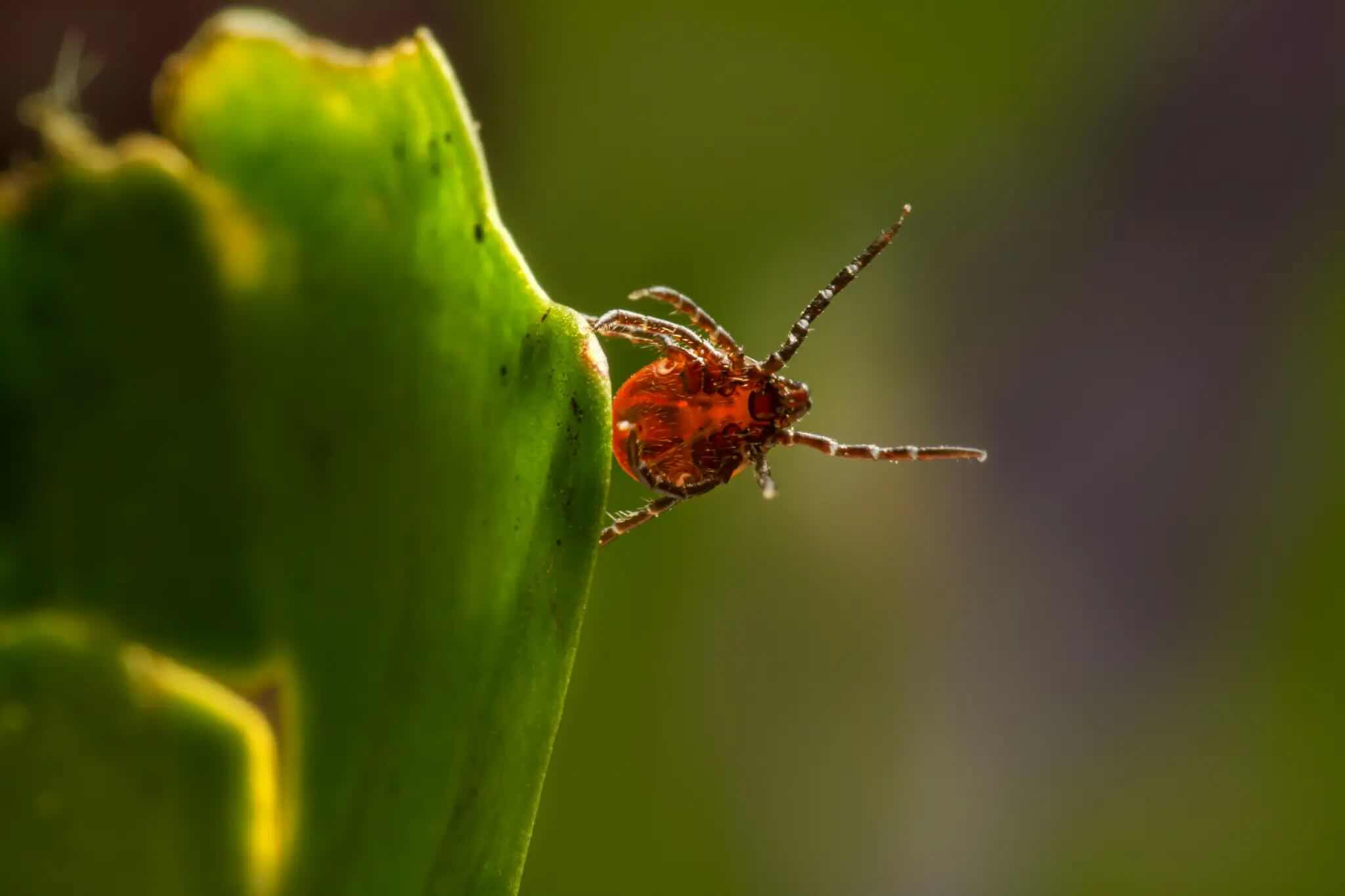
Photo Credit: Karits, E (2014). A Macro Shot of a Tick on a Leaf. Pexels.
Photo Legend: A tick is ”questing” by perching on the edge of a leaf with its front
legs extended in hopes of attaching itself to a host.
Lurking within the foliage of many forests and grasslands are predators of different shapes and sizes. One of the smallest and most common predators here in our natural areas can cause big issues. Ticks are blood-feeding parasitic arachnids that are active in Michigan from early May-November and are known to carry 15 different pathogens that can spread through their bite. Many tick-borne pathogens can cause symptoms such as fever or chills, aches and pains, or a rash. Most commonly, ticks are known for the spread of Lyme Disease, which can become chronic if left untreated. Tick-borne diseases have been on the rise for the past two decades in the U.S., having more than doubled.
Small preventative measures can be taken to prevent tick bites. By wearing long sleeves and pants when outdoors, we can reduce the likelihood of getting bitten. If you find yourself bitten by a tick, your first instinct may be to squash or swipe at it. However, it’s highly advised that you do not remove the tick with your bare hands. The CDC advises use of tweezers or a removal tool to grasp the tick as close to the surface of the skin as possible. It should be removed steadily with even pressure. Twisting or jerking the tick can damage or break the mouth parts of the tick, leaving you susceptible to the introduction of a pathogen or infection. Once the tick is safely removed you can clean the area with rubbing alcohol. Dispose of the tick by placing it in a sealed container or bag in your freezer. This way, should you become symptomatic within the span of 30 days, you can bring the tick with you to a doctor’s appointment.
So, how can we manage ticks in our yards? In 1987, a type of tick control called “tick tubes” was first developed to target these blood-sucking parasites. A cardboard tube is filled with permethrin-treated cotton and set outside in fall. Once the colder months start rolling in, mice will use this cotton to build nests, therefore making these small mammals an agent of pest-control. This reduces stray chemicals from being spread to beneficial insects and invertebrates like pollinators and leaves mice unaffected. A second set of tick tubes can be put out in spring can be helpful in managing tick populations, as well.
 Figure Legend: A diagram showing how tick tubes work in 4 steps
Figure Legend: A diagram showing how tick tubes work in 4 steps
Figure Credit: https://www.thermacell.com/products/tick-control-tubes
Preventing tick-borne diseases requires awareness, preparation, and proper response. By understanding tick behavior, we can take precautions such as wearing protective clothing, using repellants, and using targeted control methods like tick tubes, we can reduce the risks these parasites pose. If bitten, prompt and proper removal is key to minimizing potential infections. As tick populations and the disease they carry continue to rise, staying informed and hypervigilant is our best defense. With careful management, we can enjoy the outdoors while protecting ourselves and our communities from these tiny but dangerous predators.
Here are things you can do to help prevent and reduce tick-borne diseases:
-Consider wearing long sleeves and pants when outdoors;
inspect for ticks when you get home
-Know how to safely remove a latched tick with tweezers and gloves
-Use tick tubes in fall and spring to control tick populations near your home
Additional Reading
- CDC | About Ticks and Tick-Borne Diseases
- CDC | Tick Bite Bot Tool
- ESA | Evaluation of tick control tube month of placement
- Johns Hopkins | Tickborne Diseases are on the Rise
- MDHHS | Michigan’s Five Most Common Ticks
- Thermacell | Tick Control Tubes
Tags: Sustainability
